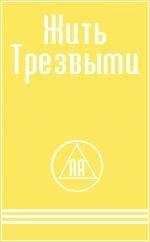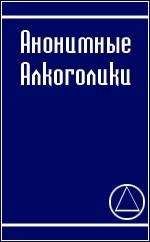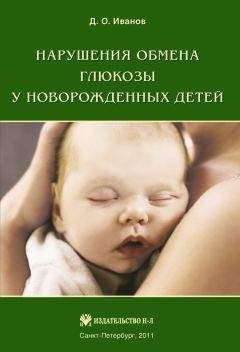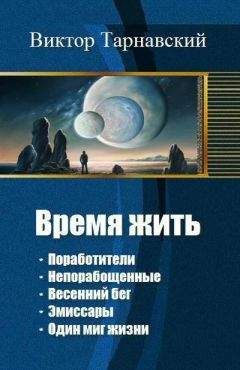Дмитрий Иванов - Нарушения теплового баланса у новорожденных детей
187. Parente A., Canizo A., HuergaA., Lain A., FanjulM., Carrera N., Corona C., Farinas М., Menendez C., Cerda J., Molina E., Vazquez J. [Is it correct to use neonatal intensive care units as operating rooms?] // Cir Pediatr. 2009. Vol. 22 (2). P. 61–64.
188. Peterson-Smith A., BarbarN., Coody D.K. Comparison of aural infrared with traditional rectal temperatures in children from birth to age three years // J. Pediatr. 1994. Vol. 125. P. 83–85.
189. Pierrat VH. N., Liska A., Thomas D., Subtil D., Truffert P. Groupe d’Etudes en Epidemi-ologie Perinatale: Prevalence, causes, and outcome at 2 years of age of newborn encephalopathy: Population based study // Arch. Dis. Child. Fetal. Neonatal Ed. 2005. Vol. 90. P. 257–261.
190 . Rey-Funes М., Ibarra M.E., Dorfman V.B., Lopez E. М., Lopez-Costa J.J., Coirini H., Loidl C. F. Hypothermia prevents the development of ischemic proliferative retinopathy induced by severe perinatal asphyxia // Exp. Eye Res. 2010. Vol. 90 (1). P. 113–120.
191. Ricquier D., NechadM., Могу G. Ultrastructural and biochemical characterization of human brown adipose tissue in pheochromocytoma // J. Clin. Endocrinol. Metab. 1982. Vol. 54. P. 803–807.
192. RingE. The historical development of temperature measurement in medicine // Infrared Physics & Technology. 2007. Vol. 49. P. 297–301.
193. Robertson С. М., Perlman M. Follow-up of the term infant after hypoxic-ischemic encephalopathy // Paediatr Child Health. 2006. Vol. 11. P. 278–282.
194. Robertson N.J., Hagmann C.F., AcoletD., Allen E., Nyombi N., Elbourne D., Costello A., Jacobs I., Nakakeeto М., Cowan F. Pilot randomized trial of therapeutic hypothermia with serial cranial ultrasound and 18–22 month follow-up for neonatal encephalopathy in a low resource hospital setting in Uganda: study protocol //Neonatal Netw. 2011. Vol.30 (3), P. 160–164.
195. RohanaJ., Khairina W., Boo N. Y., Shareena I. Reducing hypothermia in preterm infants with polyethylene wrap // Pediatr Int. 2011. Vol. 53 (4). P. 468–474.
196. Saper С. В., Breder C.D. The neurologic basis of fever // N. Engl. J. Med. 1994. Vol. 330. P. 1880–1886.
197. Sarkar S., Zaretskaia М. V, Zaretsky D. V, Moreno М., DiMicco J.A. Stress– and lipopoly-saccharide-induced c-fos expression and nNOS in hypothalamic neurons projecting to medullary raphe in rats: a triple immunofluorescent labeling study // European Journal of Neuroscience. 2007. Vol. 26. P. 2228–2238.
198. SalgeB. Введение в современную педиатрию: Руководство для врачей и студентов. СПб.: Практическая медицина, 1912. 334 с.
199. Saxena A., Wililital G. Infrared thermography: Experience from a decade of pediatric imaging // European Journal of Pediatrics. 2008. Vol. 167. P. 757–764.
200. Shankaran S., LaptookA., Wright L.L., Ehrenkranz R., Donovan E., Fanaroff A., Stark A., Tyson J. Whole-Body Hypothermia for Neonatal Encephalopathy: Animal Observations as a Basis for a Randomized, Controlled Pilot Study in Term Infants // Pediatrics. 2002. Vol. 110, N2. P. 377–385.
201. Shah P. S., Ohlsson A., Perlman M. Hypothermia to treat neonatal hypoxic ischemic encephalopathy: systematic review // Arch Pediatr Adolesc Med. 2007. Vol. 161. P. 951–958.
202. Shibasaki М., Aoki K., Morimoto K., Johnson J. М., Takamata A. Plasma hyperosmolality elevates the internal temperature threshold for active thermoregulatory vasodilation during heat stress in humans // Am. J. Physiol. Regul. Integr. Comp. Physiol. 2009. Vol. 297. P. R1706-1712.
203. Shimoyama Т., Kaneko Т., Horie N. Floor of mouth injury by mercury from a broken thermometer// J. Oral Maxillofac Surg. 1998. Vol. 56 (1). P. 96–98.
204. Shitaye D., Asrat D., Woldeamanuel Y., WorkuB. Risk factors and etiology of neonatal sepsis in Tikur Anbessa University Hospital, Ethiopia // Ethiop. Med. J. 2010. Vol. 48 (1). P. 11–21.
205. Silverman B. G., Daley W.R., Rubin J.D. The use of infrared ear thermometers in pediatric and family practice offices // Public Health Rep. 1998. Vol. 113. P. 268–272
206. Simon P., Dannaway D., Bright B., KrousL., Wlodaver A., Burks B., Thi C., Milam J., Escobedo M. Thermal defense of extremely low gestational age newborns during resuscitation: exothermic mattresses vs polyethylene wrap // J. Perinatol. 2011. Vol. 31 (1). P. 33–37.
207. Smiddy F.G., Benson E.A. Rectal perforation by thermometer // Lancet. 1969. Vol. 3. P. 805–806.
208. Steketee J. Spectral emissivity of skin and pericardium // Physics in Medicine and Biology. 1973. Vol. 18. P. 686–694.
209. Stitt J. T. Prosaglandin El fever induced in rabbits // J. Physiol. 1973. Vol. 232. P. 163–179.
210. Stocker C. F., Shekerdemian L. S., Horton S. B. et al. The influence of bypass temperature on the systemic inflammatory response and organ injury after pediatric open surgery: a randomized trial // J. Thorac. Cardiovasc. Surg. 2011. Vol. 142 (1). P. 174–180.
211. Stojanovic V, Vuckovic N., Spasojevic S., BarisicN., Doronjski A., ZikicD. The influence of EPO and hypothermia on the kidneys of rats after perinatal asphyxia // Pediatr. Nephrol. 2011 Jul 2. [Epub ahead of print].
212. Stuart J.A., Harper J.A., Brindle K.M., Jekabsons M.B., Brand M. D. A mitochondrial uncoupling artifact can be caused by expression of uncoupling protein 1 in yeast // Biochem J.
2001. Vol. 356. P. 779–789.
213. Sultan G., Sehreiber E. Первая помощь в несчастных случаях. Руководство, составленное для врачей. СПб.: Практическая Медицина, 1905. 296 с.
214. Takamata A., Mack G. W., Gillen С. М., Jozsi А. С., Nadel Е. R. Osmoregulatory modulation of thermal sweating in humans: reflex effects of drinking // Am. J. Physiol. 1995. Vol. 268, P. R414-422.
215. Takenouchi Т., Rubens E. О., Yap V.L., Ross G., Engel М., Perlman J.M. Delayed onset of sleep-wake cycling with favorable outcome in hypothermic-trea-ted neonates with encephalopathy // J. Pediatr. 2011. Vol. 159 (2). P. 232–237.
216. te Pas A. B., Lopriore E., Dito L, Morley C. J., Walther F. J. Humidified and heated air during stabilization at birth improves temperature in preterm infants // Pediatrics. 2010. Vol. 125 (6). P. 1427–1432.
217. TepperM., Neeman R., Milstein Y., David М., Gannot I. Thermal imaging method for estimating oxygen saturation // Journal of Biomedical Optics. 2009. Vol. 14. P. 1–12.
218. Tews D., Wabitsch M. Renaissance of Brown Adipose Tissue // Horm Res Paediatr. 2011. Vol. 75. P. 231–239.
219. Thomas К. A., Magbalot A., Shinabarger К., Mokhnach L., Anderson М., Diercks К., Millar A., Thorngate L., Walker W., DilbackN., BerkanM. Seasonal mapping of NICU temperature // Adv Neonatal Care. 2010. Vol. 10 (5 Suppl), S2-6.
220. Trevisanuto D., Doglioni N., Cavallin F., Parotto М., Micaglio М., Zanardo V Heat loss prevention in very preterm infants in delivery rooms: a prospective, randomized, controlled trial of polyethylene caps // J Pediatr. 2010. Vol. 156 (6). P. 914–917.
221. Turlejska E., Baker M. A. Elevated CSF osmolality inhibits thermoregulatory heat loss responses // Am J Physiol., 1986, Vol. 251, R. 749–754.
222. Van Leeuwen G.M., HandJ. W., Lagendijk J.J., Azzopardi D. V, Edwards A. D. Numerical modeling of temperature distributions within the neonatal head // Pediatr Res. 2000. Vol. 48
(3). P. 351–356.
223. Van Marken Lichtenbelt W.D., Vanhommerig J.W., Smulders N.M., Drossaerts J.M., Ke-merink G. J., Bouvy N. D., Schrauwen P., Teule G. J. Cold-activated brown adipose tissue in healthy men // N. Engl. J. Med. 2009. Vol. 360. P. 1500–1508.
224 . Villicev C.M., Freitas F. R. S., AokiM.S., Taffarel C., ScanlanT.S., Moriscot A. S., Ri-beiro M.O., Bianco A. C., Gouveia C.H.A. Thyroid hormone receptor (3-specific agonist GC-1 increases energy expenditure and prevents fat-mass accumulation in rats // J. Endocrinol. 2007. Vol. 193. P. 21–29.
225. Virtanen K.A., Lidell M.E., OravaJ., HeglindМ., Westergren R., Niemi Т., Taittonen М., Laine J., Savisto N. J., Enerback S., Nuutila P. Functional brown adipose tissue in healthy adults // N. Engl. J. Med. 2009. Vol. 360. P. 1518–1525.
226. Whybrew K., Murray М., Morley C. Diagnosing fever by touch: observational study // BMJ, 1998. Vol 317 (7154). P. 321.
227. Whyte D. G., Johnson A. K. Lesions of the antero ventral third ventricle region (AV3 V) disrupt cardiovascular responses to an elevation in core temperature // Am. J. Physiol. Regul. Integr Comp. Physiol. 2005. Vol. 288. R. 1783–1790.
228. Wintermark P., Boyd Т., Gregas M.C., Labrecque М., Hansen A. Placental pathology in asphyxiated newborns meeting the criteria for therapeutic hypothermia // Am. J. Obstet. Gynecol. 2010. Vol. 203 (6). P. 579, el-9.
229. Whitrow M. Wagner-Jauregg and fever therapy // Medical History. 1990. Vol. 34. P. 294–310.
230. World Health Organization. Thermal Protection of the Newborn: A Practical Guide // Geneva: World Health Organization. 1997.
231. Wusthoff C. J., Dlugos D. J., Gutierrez-Colina A., Wang A., Cook N., Donnelly М., Clancy R., Abend N. S. Electrographic seizures during therapeutic hypothermia for neonatal hypoxic-ischemic encephalopathy // J. Child. Neurol. 2011. Vol. 26 (6). P. 724–728.
232. Wyatt J. S., Thoresen M. Hypothermia treatment and the newborn // Pediatrics. 1997. Vol. 100 (6). P. 1028–1030.
233. Yamada К., Mano Т., Inada Y., Mogami Y., Toribe Y., Yanagihara K., Tachibana K., Suzuki Y. [Changes of brain edema after initiation of mild hypothermia therapy in children] // No-ToHattatsu. 2011. Vol. 43 (1). P. 10–3.
234. Yamagata K., Matsumura K., Inoue W., Shiraki Т., Suzuki K., Yasuda S., Sugiura H., Cao C., Watanabe Y., Kobayashi S. Coexpression of microsomal-type prostaglandin E synthase with cyclooxygenase-2 in brain endothelial cells of rats during endotoxin-induced fever // J. Neu-rosci. 2001. Vol. 21. P. 2669–2677.
235. Yentur E.A., Topcu I., EkiciZ., OzturkT., Keles G.T., Civi M. The effect of epidural and general anesthesia on newborn rectal temperature at elective cesarean section // Braz. J. Med. Biol Res. 2009. Vol. 42 (9). P. 863–867.
236. Yokoyama K., Suzuki М., Shimada Y., Matsushima Т., Bito H., Sakamoto A. Effect of administration of pre-warmed intravenous fluids on the frequency of hypothermia following spinal anesthesia for Cesarean delivery // J. Clin. Anesth. 2009. Vol. 21 (4). P. 242–248.
237. Young P., Arch J. R., Ashwell M. Brown adipose tissue in the parametrial fat pad of the mouse//FEBS Lett. 1984. Vol. 167. P. 10–14.
238. Zayeri F., Kazemnejad A., Ganjali M. Incidence and risk factors of neonatal hypothermia at referral hospitals in Tehran, Islamic Republic of Iran // East Mediterr Health J. 2007. Vol. 13. P. 1308–1318.
239. Zonana J. Hypohidrotic (anhidrotic) ectodermal dysplasia: molecular genetic research and its clinical applications // Semin. Dermatol. 1993. Vol. 12. P. 241–246.
Приложения
Приложение 1 Реанимация детей при рождении (Европейский консенсус по реанимации, 2010)
Основные изменения по сравнению с протоколом 2005 года
• У детей, не относящихся к группам риска, рекомендуется отсрочка пережатия пуповины по крайней мере на 1 минуту после полного извлечения ребенка. До сих пор не существует рекомендаций, касающихся времени пережатия пуповины у детей, имеющих осложнения в родах.
• Для реанимации доношенных детей необходимо использовать воздух. В том случае, если при обеспечении адекватной вентиляции не удается достичь необходимой оксигенации (в идеале, измеренной с помощью пульсоксиметра), используют более высокие концентрации кислорода.
• При реанимации недоношенных детей со сроком гестации менее 32 недель необходимая оксигенация может быть не достигнута при использовании воздуха. В таких случаях необходимо использовать кислородно-воздушную смесь, благоразумно подходя к выбору процента кислорода.
• Недоношенные со сроком гестации менее 28 недель должны быть сразу после рождения покрыты пищевой пленкой или помещены в пакет до шеи, без предварительного обсушивания. Все дальнейшие манипуляции должны выполнятся под источником лучистого тепла. Ребенок должен оставаться в пакете до тех пор, пока не появится возможность контролировать температуру его тела. Температура воздуха в родильном зале, где рождается такой ребенок, не должна быть менее 26 °C.
• Рекомендуемое соотношение частоты компрессий грудной клетки к частоте дыханий при проведении реанимации составляет 3:1.
• При внутривенном введении адреналина рекомендуемая доза 10–30 мкг/кг. Для достижения эффекта, соответствующего эффекту внутривенно введенного адреналина в дозе 10 мкг/кг, эндотрахеально адреналин необходимо вводить в дозе 50-100 мкг/кг.
• Использование определения диоксида углерода в выдыхаемом воздухе в дополнение к клиническим признаком рекомендовано для определения местоположения эндотрахеальной трубки у новорожденных со спонтанным дыханием.




